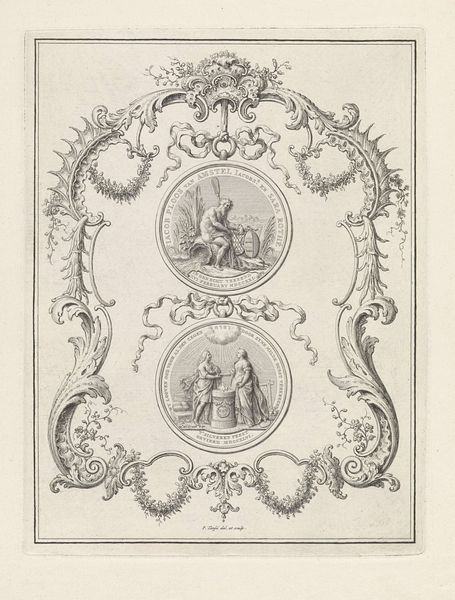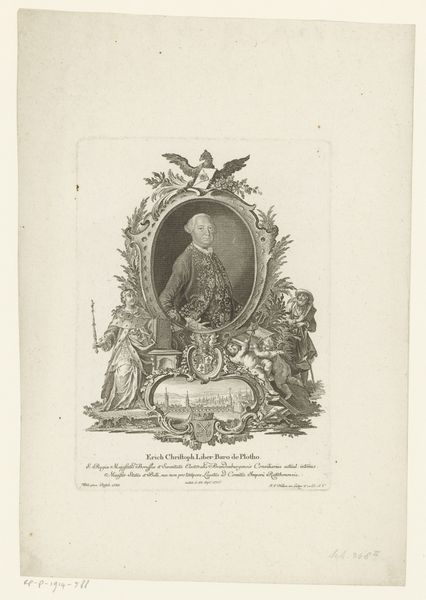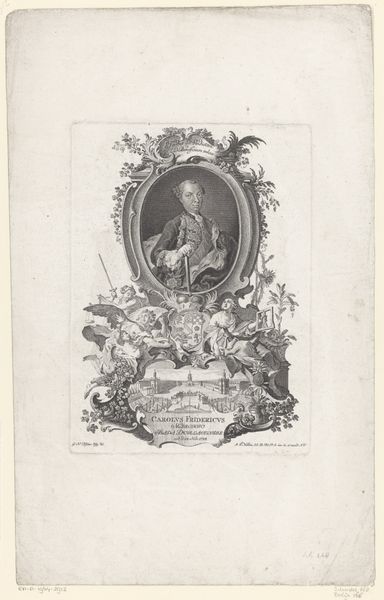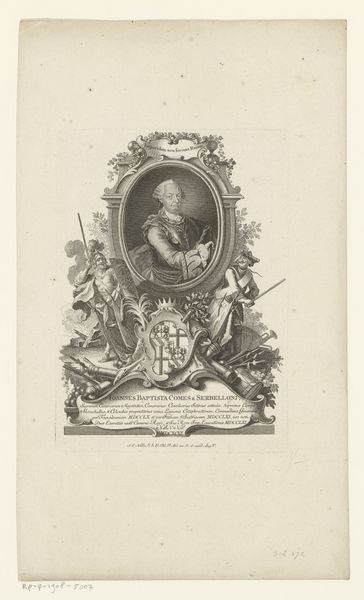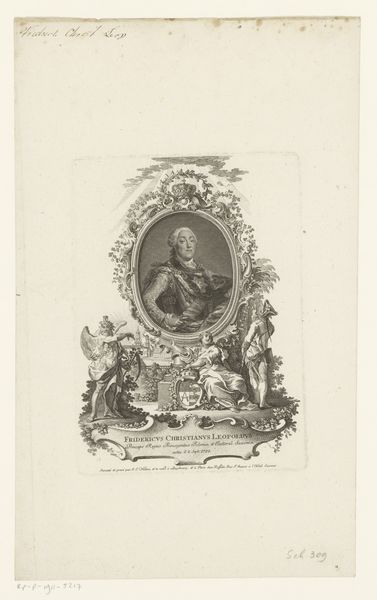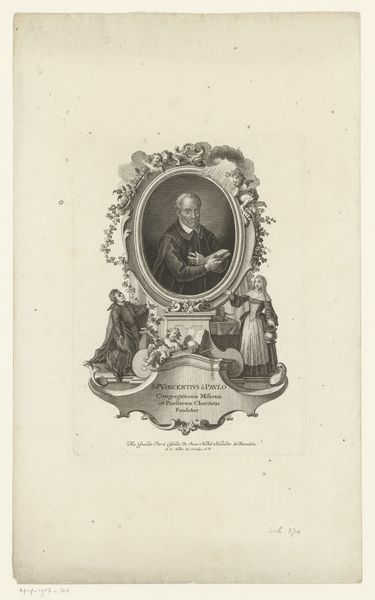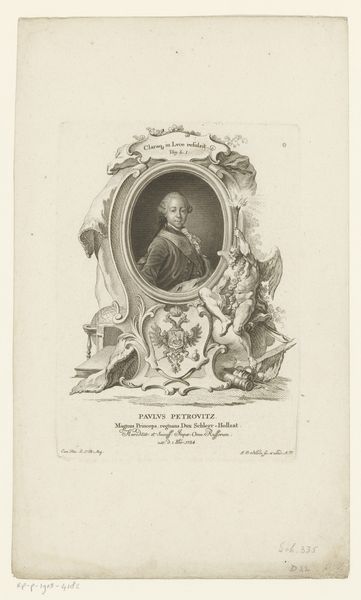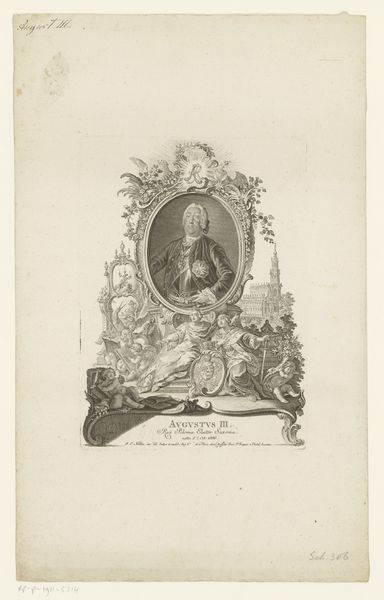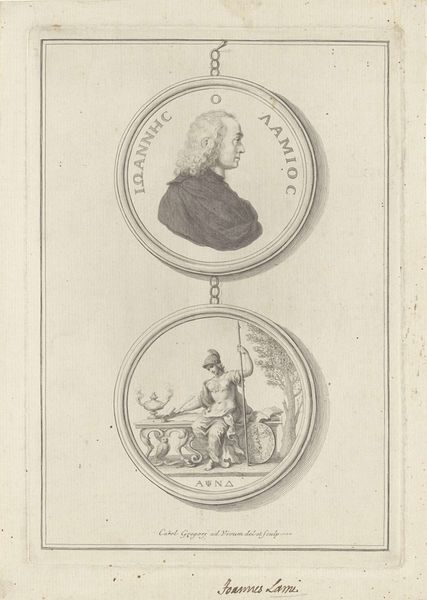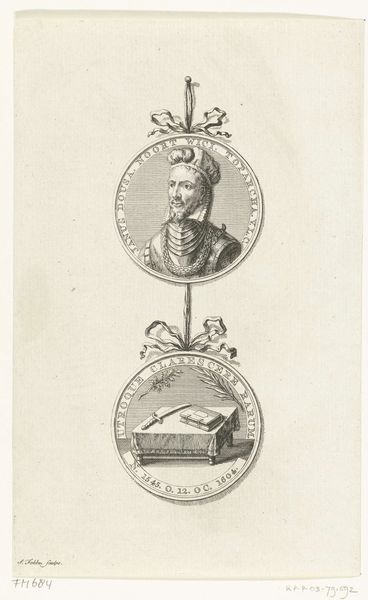
print, engraving
#
portrait
#
neoclacissism
# print
#
old engraving style
#
history-painting
#
engraving
Dimensions: height 235 mm, width 144 mm
Copyright: Rijks Museum: Open Domain
Curator: Here we have an engraving, "Medaille ter ere van Willem Crul, 1781" by Noach van der Meer II. It dates from between 1781 and 1782. Editor: It strikes me as quite formal, even austere, in its design, with that very contained circular portrait. The elaborate frame surrounding the medals adds an interesting tension—like decoration fighting against restraint. Curator: Yes, and that tension speaks to the era. This piece reflects Neoclassical tastes gaining momentum, a preference for order and reason following the more exuberant Rococo period. Medals like this served as tools of public memory and national identity, reinforcing specific virtues. Editor: Absolutely, and consider the means of production! Engraving allowed for wide dissemination. These weren't unique artworks for the elite, but objects meant for circulation, reminding citizens of Crul’s contribution. What sort of paper would they have used? Its texture and origin matter to the final product and how it's perceived, right? Curator: Indeed. The print medium made this widely accessible to literate society at the time, especially those within Dutch political circles, fostering public engagement in the virtues this medal meant to promote. We can appreciate this medal now as both an artistic piece, and an example of how printed material like this functioned within Dutch society. Editor: I'm intrigued by the use of allegorical imagery in the lower medallion—those scenes played out within a confined space, but surely carrying a grand, moralising narrative? How would different inks and paper stock effect our reading of these tales? Curator: Precisely! The piece embodies that didactic spirit of the late 18th century. Through repeated impressions, the image of Willem Crul becomes interwoven with the values the artist and patron hoped to cultivate within society. It shows us not just who Crul was, but what characteristics were valued. Editor: Seeing the level of craftsmanship gives one a new appreciation of engraving. To consider that labor intensifies my consideration of the medals as an object of both display and production! It is interesting to think of where this piece resides now; suspended in time within a museum like this. Curator: For me, examining the institutional journey of the medal - from distribution into collections such as that here in the Rijksmuseum - reminds us that an art object shifts within evolving social frameworks. We are able to see here what past publics and present publics might value, through history and material, in a dialogue.
Comments
No comments
Be the first to comment and join the conversation on the ultimate creative platform.
